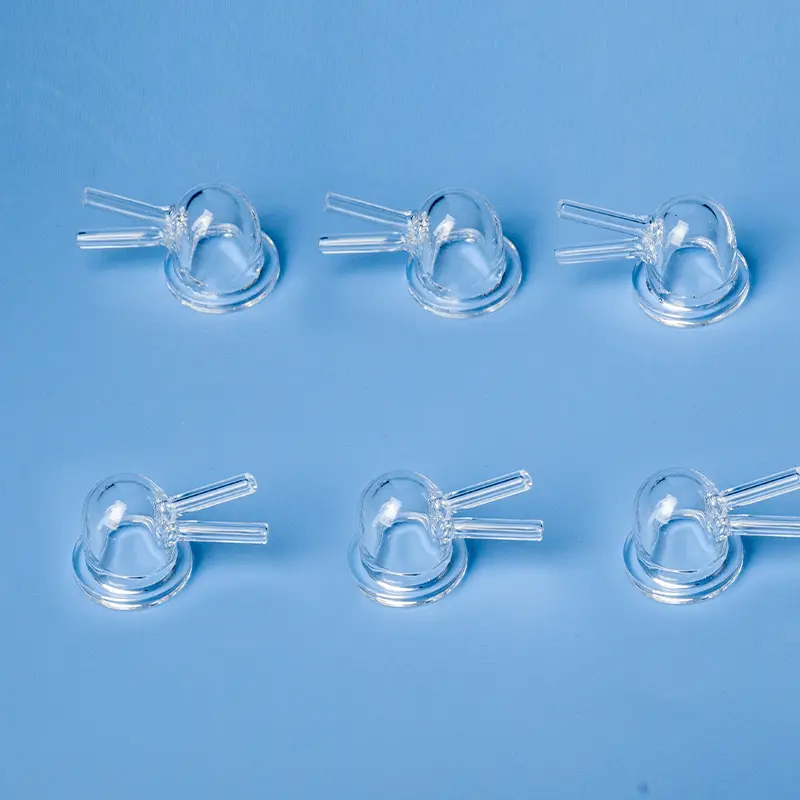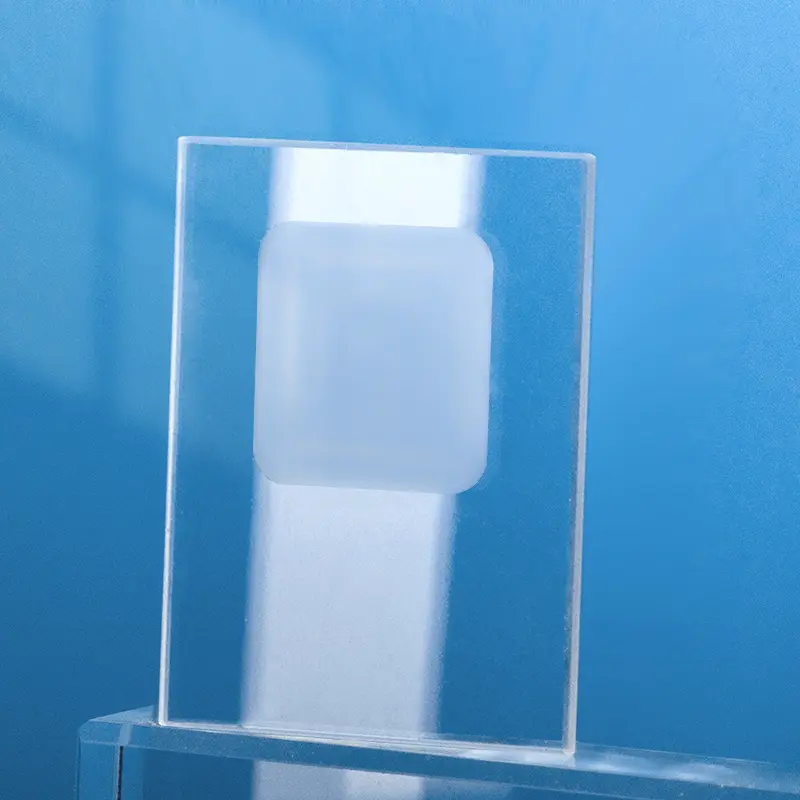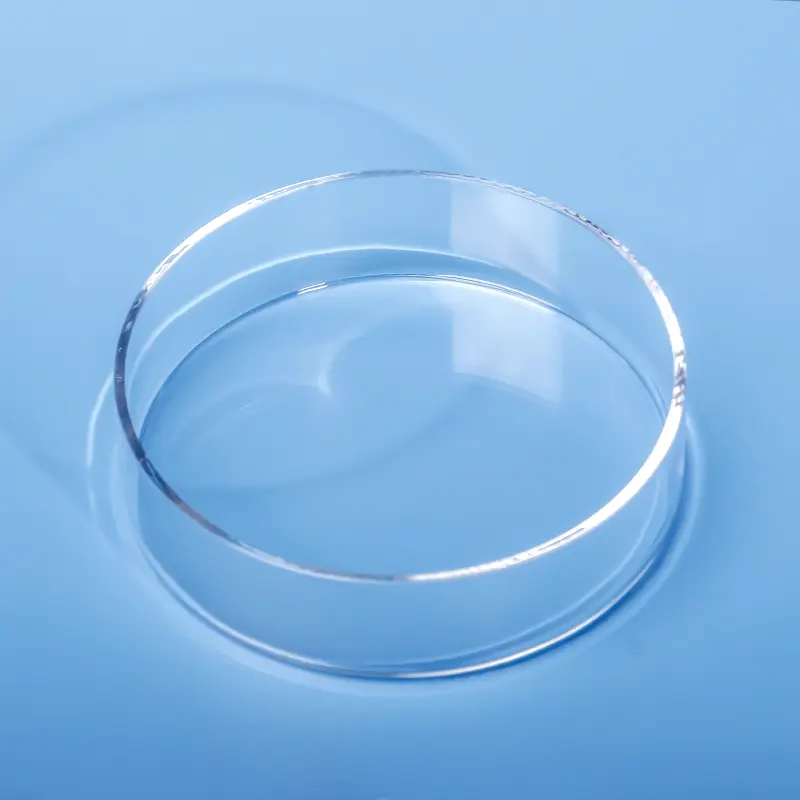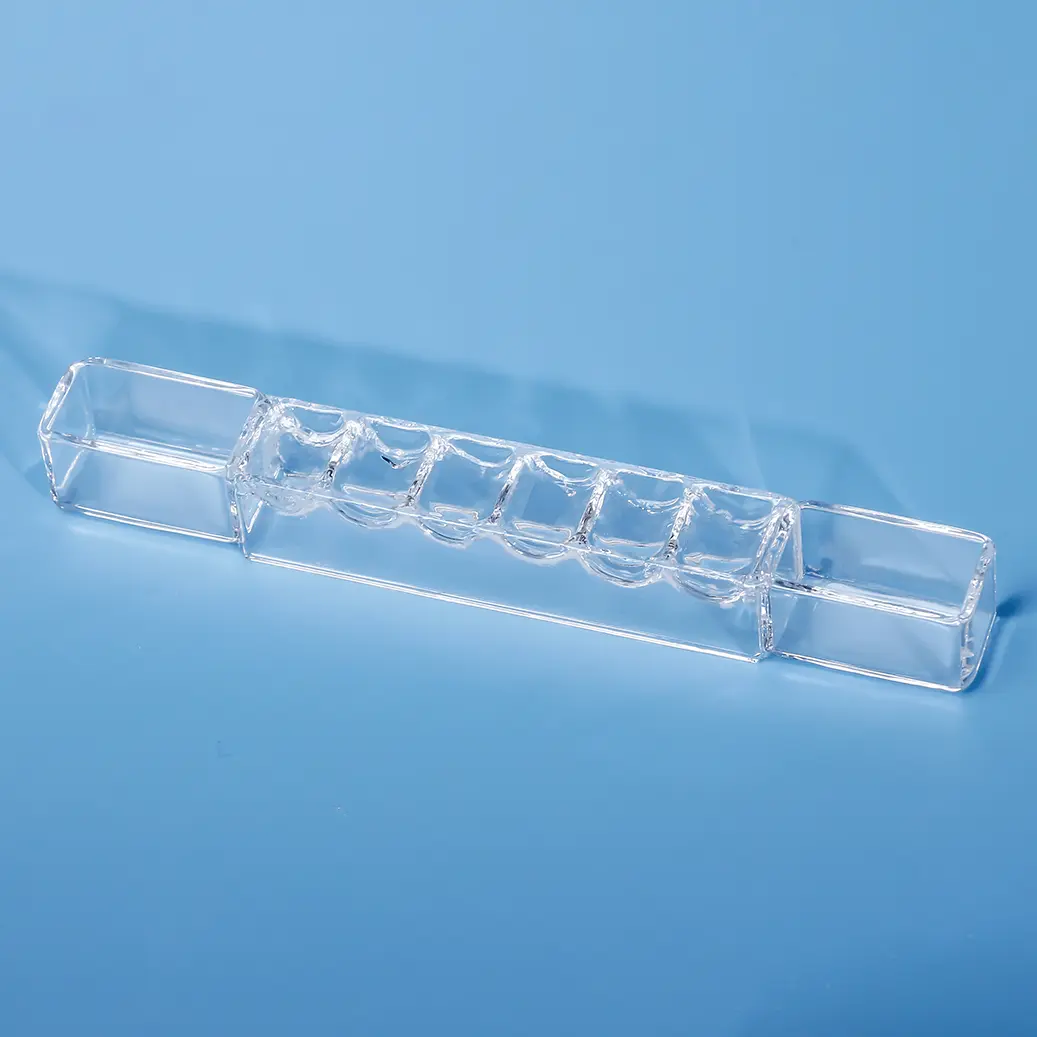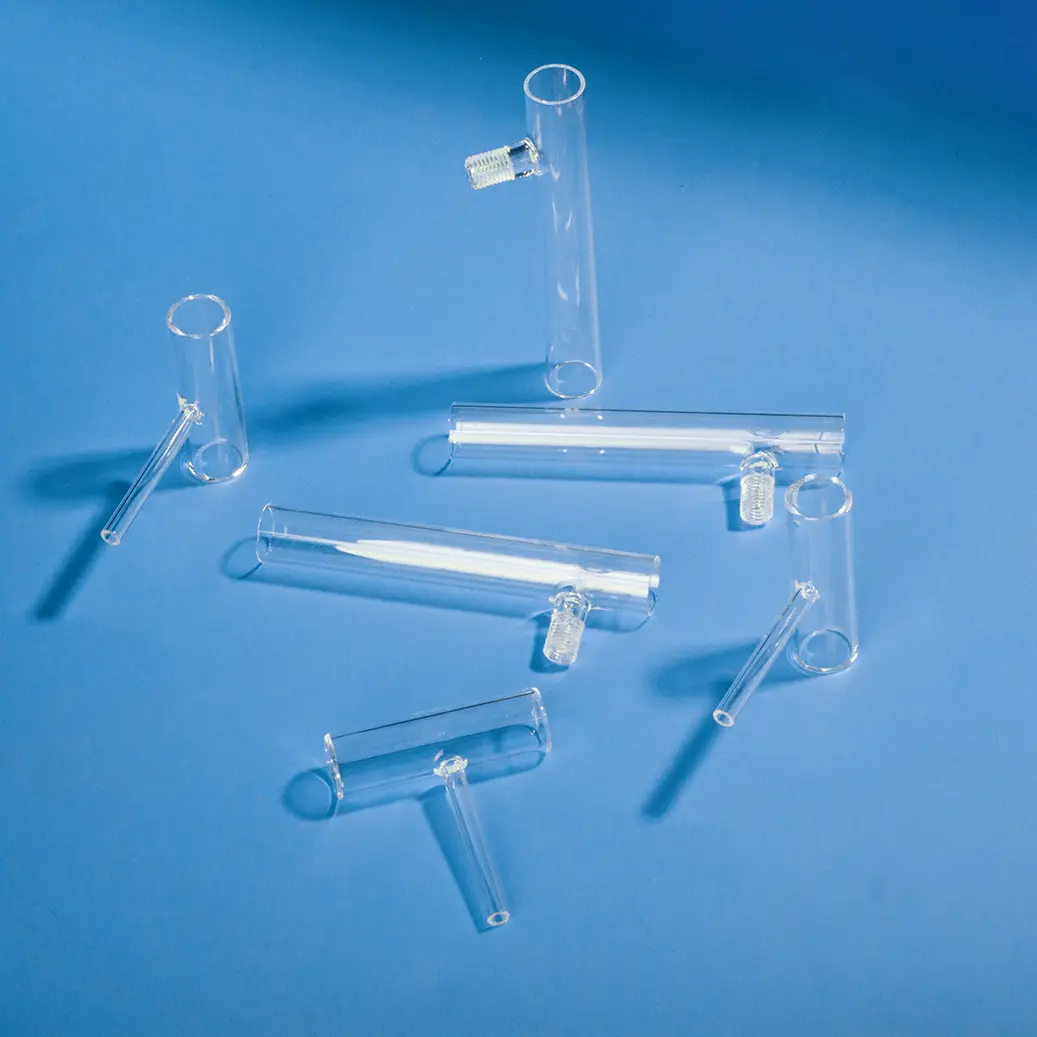Quartz flow cells are high-precision laboratory instruments widely used in spectroscopic and chemical analyses due to their excellent optical properties and chemical resistance. They provide precise optical path lengths and are suitable for a wide range of wavelengths, thus meeting the requirements of various analytical techniques.
| Property Content | Property Values |
|---|---|
| SiO2 | 99.99% |
| Density | 2.2×10³ kg/cm³ |
| Hardness | 5.5 - 6.5 Mohs' Scale 570 KHN 100 |
| Tensile Strength | 4.8×10⁷ Pa (N/mm2) (7000 psi) |
| Compression Strength | >1.1×10⁹ Pa (160,000 psi) |
| Coefficient of Thermal Expansion | 5.5×10⁻⁷ cm/cm·°C (20°C-320°C) |
| Thermal Conductivity | 1.4 W/m·°C |
| Specific Heat | 670 J/kg·°C |
| Softening Point | 1730°C (3146°F) |
| Annealing Point | 1210°C (2210°F) |
| Strain Point | 1120°C (2048°F) |
| Work Temperature | 1200°C (2192°F) |
| Electrical Resistivity | 7×10⁷ ohm cm (350°C) |
| Size | Customized |
| Logo | Customized Logo Accept |
Excellent Optical Performance
Quartz flow cells are typically constructed from fused silica tubing, a material with excellent optical properties. This allows the cells to contain the sample being analyzed and to be illuminated by light sources such as fluorescence or ultraviolet light, enabling fluorescence or other spectroscopic analyses.
High Chemical Resistance
Flow cells made from quartz material exhibit high chemical resistance, withstanding strong acids, bases, and organic solvents, ensuring stable performance in various chemical analyses.
Precise Optical Path Length Control
Quartz flow cells provide precise control over the optical path length, which is critical for spectroscopic analysis. Some flow cells can achieve path length precision of ±0.02 mm, ensuring the accuracy of measurements.
Wide Wavelength Range Applicability
Quartz flow cells are suitable for a broad wavelength range, from ultraviolet to visible and even near-infrared regions. This allows them to be used in various analytical techniques, such as UV/VIS/NIR spectroscopy.
Application Scenario
Optical path contamination is a common issue that can affect the performance of quartz flow cells. To avoid optical path contamination, regularly flush the flow cell with ultrapure water and check that the quartz windows are clean. Also, ensure that the solvents used are pure to prevent contamination from impure solvents.
The pressure resistance of quartz flow cells depends on their design and materials. For example, some quartz flow cells are only rated to withstand pressures of up to 20 bar. Therefore, when using them, avoid excessively high pressures to prevent damage. Different detectors have flow cells with varying pressure resistances. For example, DAD/MWD detectors can typically withstand pressures up to 120 bar, while FLD detectors are limited to 20 bar.
Proper maintenance and cleaning of quartz flow cells are essential. Avoid allowing samples to dry inside the flow cell; they should be cleaned immediately after use, following the manufacturer’s cleaning instructions. Also, avoid direct contact with the measurement window to prevent contamination or scratching, which can affect the accuracy of measurements. To address potential algae growth issues, an organic solvent such as 5% acetonitrile or methanol can be added and the cell should be flushed regularly with double-distilled water.
Frequently asked questions
Quartz glass is a hard and brittle material with excellent physical and chemical properties, extremely high mechanical hardness, good electrical insulation, high temperature and corrosion resistance, low and stable delay performance, good light transmittance, etc. It is widely used in semiconductors, optics, electricity, chemistry, aerospace, automobiles and other fields. Hard and brittle materials are difficult to process, and many fields urgently need cutting processes with small edge collapse, less material loss, low cross-section roughness, and a wide cutting thickness range. The traditional cutting method of quartz glass is mechanical cutting, that is, wheel cutting. Non-traditional cutting methods include water jet cutting, electrochemical discharge wire cutting, continuous laser cutting, etc. Mechanical cutting has low cost, but the contact between the wheel and the material causes large tool wear, and the material is easily contaminated by the tool. Quartz glass is prone to edge collapse, microcracks, and residual stress, which affects the strength and performance of the material! It is difficult to achieve curve cutting and requires post-processing, such as grinding and polishing. Laser cutting does not directly contact the material, has no contact stress, and can perform complex curve cutting. Picosecond laser has the advantages of small spot diameter, high precision, short action time with the material, and small action area, and is suitable for the processing of hard and brittle materials.
。

